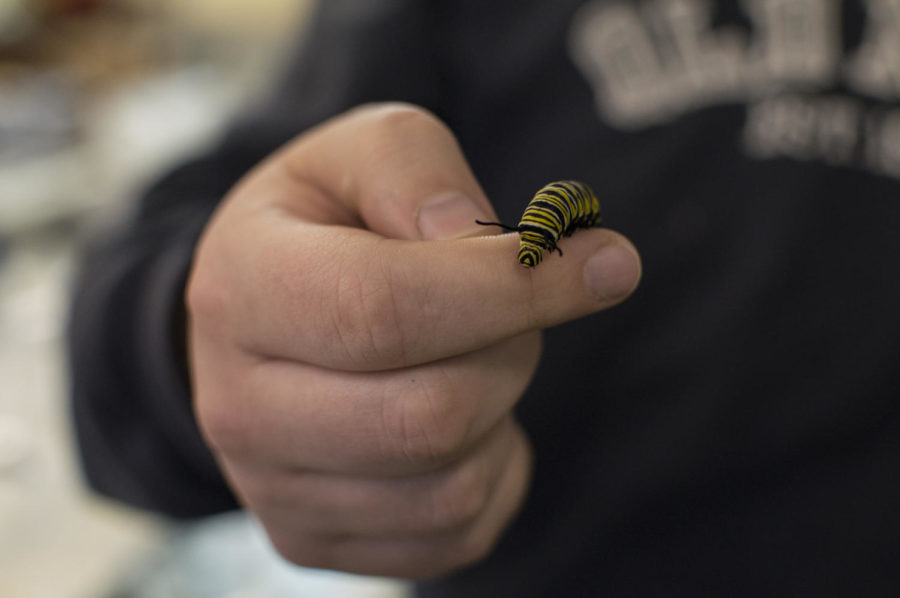Helping the Monarch
March 12, 2015
As spring nears, the temporary residents of the Trans-Mexican Volcanic Belt pine-oak forest in Mexico will begin their long trek up to Southern Canada. The almost 3,000-mile trip is made twice a year by the Monarch Butterfly, once to Mexico in the fall and then back to Canada in the spring.
Over the past years however, scientists and butterfly enthusiasts alike have been noticing a significant decline in the Monarch populations overwintering in Mexico.
In the last 20 years the Monarch population has dropped by 90 percent, according to National Geographic. The decline has been credited to deforestation in Mexico and increased herbicide use in the United States, which is killing off milkweed plants, the sole source of food for Monarch larvae, said Rick Hellmich, Entomologist for the USDA Agricultural Research Service.
To counteract the Monarch decline, scientists, farmers and many others have created the Iowa Monarch Conservation Consortium, a group that plans to reinstate Milkweed into Iowa landscapes.
“The Monarch is an iconic species in Iowa,” said Sue Blodgett, chair of the Entomology Department and member of the Consortium. “Because of this, lots of people are interested in helping us.”
Monarchs need milkweed, without it they have no place to lay their eggs. The Monarch lays between 200-400 eggs in its lifetime on the undersides of milkweed leaves, of the 200-400 only about 5 percent survive, said Keith Bidne, Entomologist for the USDA Agricultural Research Service.
In February nine species of milkweed were planted in ISU Greenhouses. Over the summer these seedlings will be transported to 12 research farms across the state where they will be evaluated on their growth and the effect they have on the migrating butterflies, Blodgett said. Once the initial research is done the best milkweed species will be planted in Iowa farms and prairies.
Most of Iowa’s farmland is privately owned, so the Consortium needs the aid of farmers, Blodgett said.
“The agriculture industry is being very proactive,” Blodgett said. “They understand the need to provide more habitat for Monarchs.”
Monarchs don’t need a big 10-acre field, she said. Instead of planting the milkweed in their fields, farmers should plant it in small patches around their barns. The most important thing will be to ensure that the milkweed is planted close enough so that the Monarchs can easily reach it during their migration, Blodgett said.
However, farmers are not the only ones that can help grow milkweed. Milkweed is a common weed found in gardens, instead of pulling it out gardeners could keep it and provide a little more space for the Monarchs Blodgett said.
The Monarch could even help some gardens grow. While they might not be as affective at pollinating as bee’s, Monarchs do still pollinate plants while they are looking for nectar.
Another great thing about Monarchs, Blodgett said, is their aid in biological teachings. Monarchs are used in many elementary school classrooms to teach kids about the life cycle and biology in general.
Blodgett hopes Iowa will be a rallying point for the United States. She said she thinks other states will see what Iowa is doing and will begin their own work in bringing back a suitable Monarch habitat to the Midwest.
“It’s going to take a few years, but after five years when we look back and ask ourselves ‘did it matter?’ Blodgett said. “We hope the answer is yes.”







